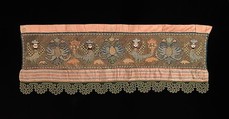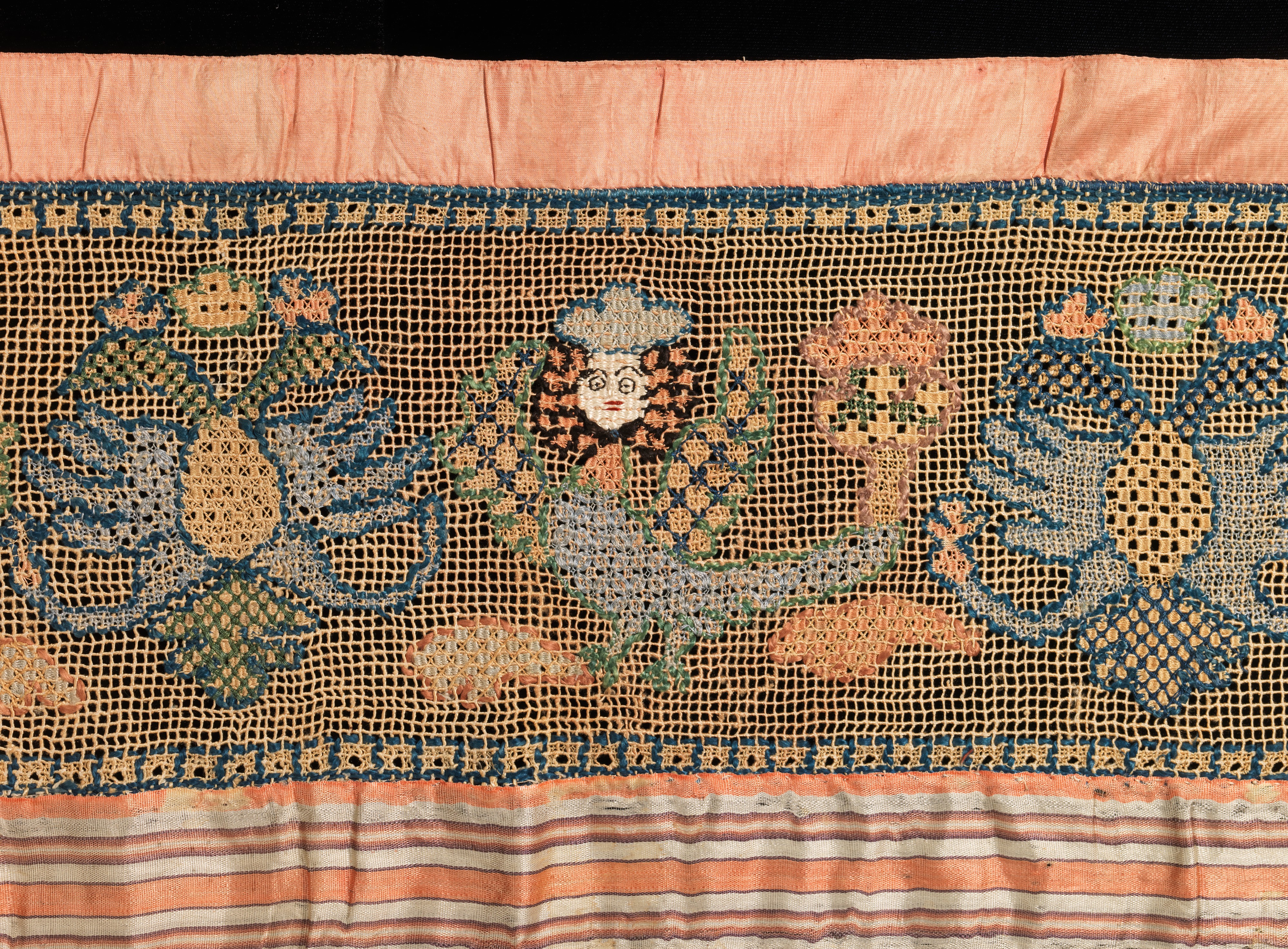Towel border
Not on view
This object is from the collection of Natalia de Shabelsky (1841-1905), a Russian noblewoman compelled to preserve what she perceived as the vanishing folk art traditions of her native country. Traveling extensively throughout Great Russia, she collected many fine examples of textile art of the wealthy peasant class. From the 1870s until moving to France in 1902, Shabelsky amassed a large collection of intricately embroidered hand-woven household textiles and opulent festival garments with rich decoration and elaborate motifs. The Brooklyn Museum holdings include many fine examples including the majority of the garments. Portions of Shabelsky's collection are also housed at the Museum of Fine Arts, Boston, the Cleveland Art Museum, and the Russian Museum of Ethnography in St. Petersburg.
In Russian culture the Sirin, Alkonost, and Gamayun are mythical birds with the head and often breast of women. The Sirin, based on the Siren of Greek mythology, sings songs of the heavens, but leads mortal men to their death. The siren is often a metaphor for temptation of the weak. The Alkonost and Gamayun are not considered evil as the Sirin. They deliver prophecies to mortals and represent God's will in religious belief. The bird is combined with the imperial eagle, a symbol of Russian sovereignty.
Due to rights restrictions, this image cannot be enlarged, viewed at full screen, or downloaded.
This artwork is meant to be viewed from right to left. Scroll left to view more.



